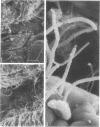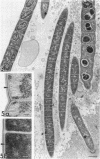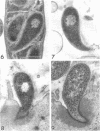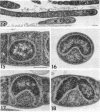Abstract
Light and electron microscope observations showed that the filamentous, segmented bacterium commonly found attached to the ileal epithelium of rats and mice undergoes a complex life cycle. Filaments comprising up to 90 segments were attached to the microvillous border of absorptive epithelial cells by a specialized terminal holdfast segment. Starting at the free end of the filament and progressing toward the attached end, undifferentiated segments were converted into reproductive or mother segments. Within each mother cell two new holdfast segments developed. As the holdfasts matured, their mother cells degenerated and released them into the intervillar space where they attached, grew, and divided to produce new segmented filaments. Alternately, in some filaments, newly formed but not yet released holdfasts were converted into endospores, which were released in the same manner as holdfasts, presumably to spread the bacterial colony to other members of the rodent population.
Full text
PDF
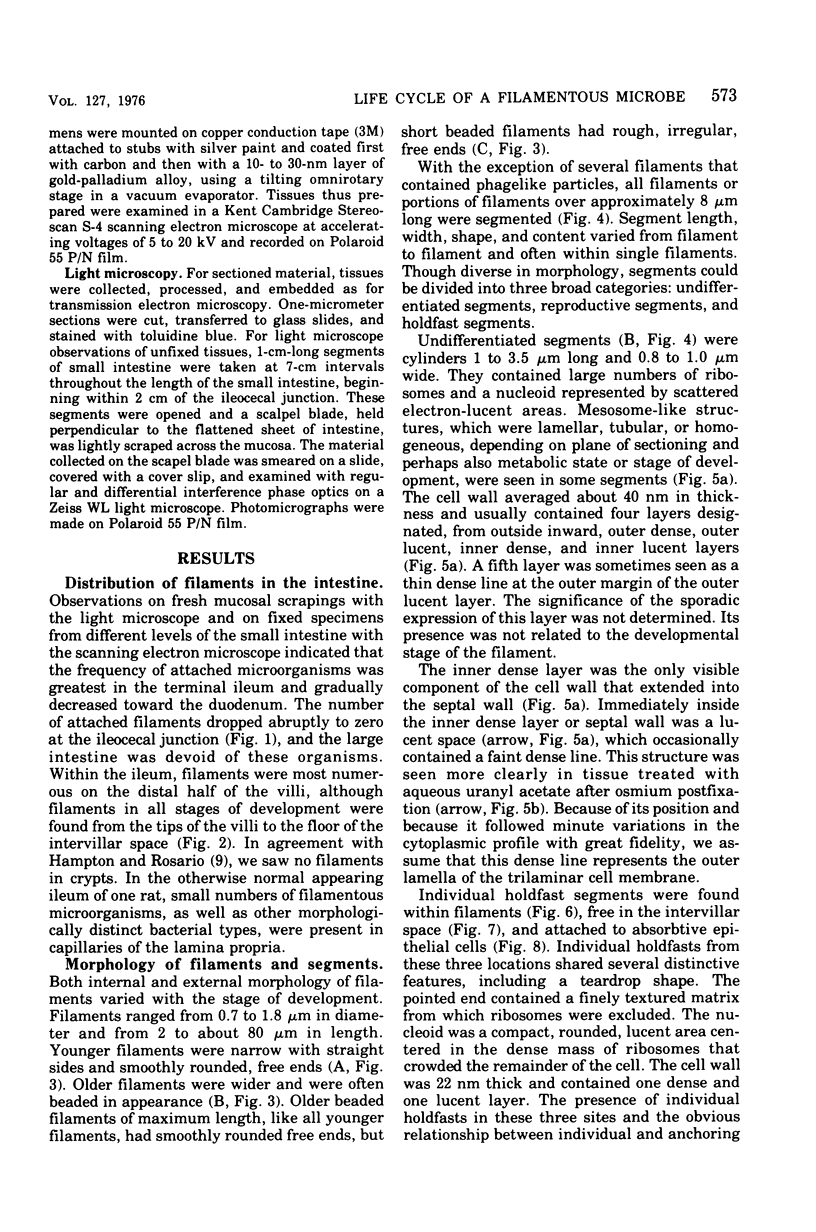
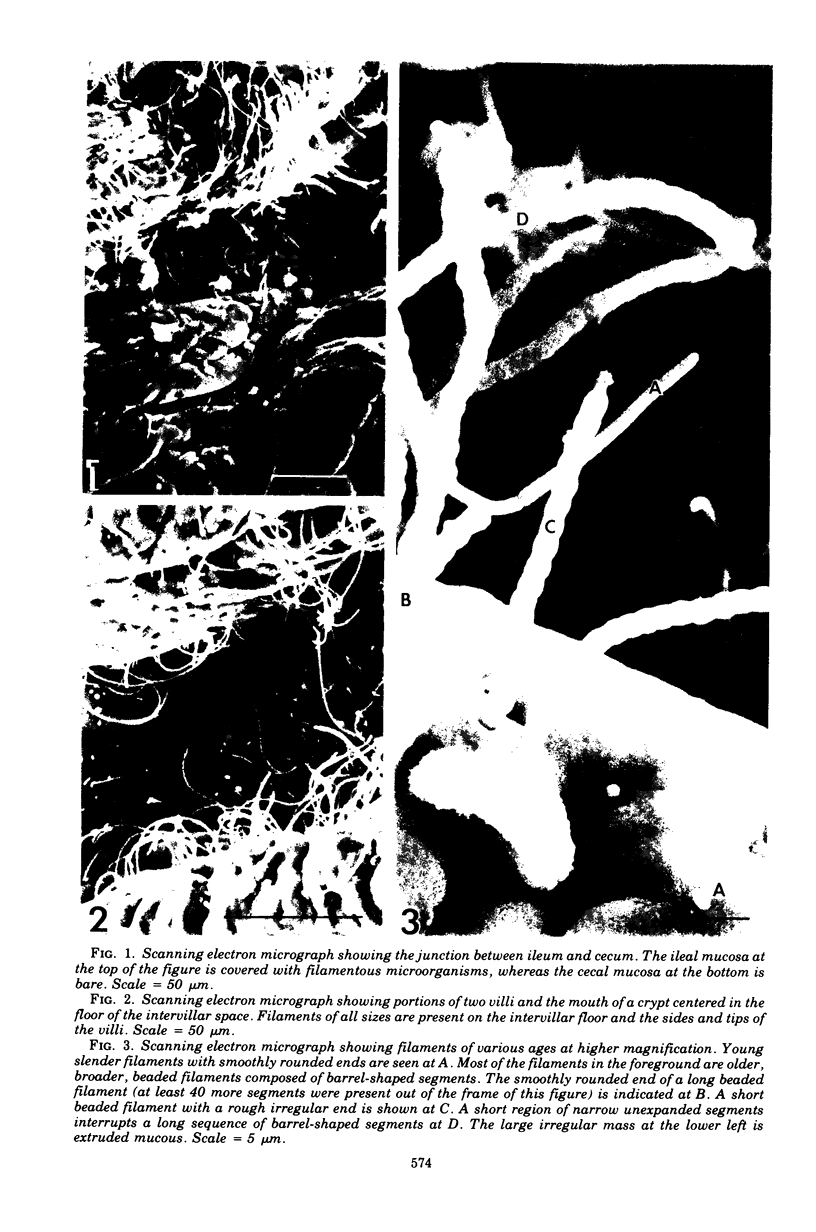
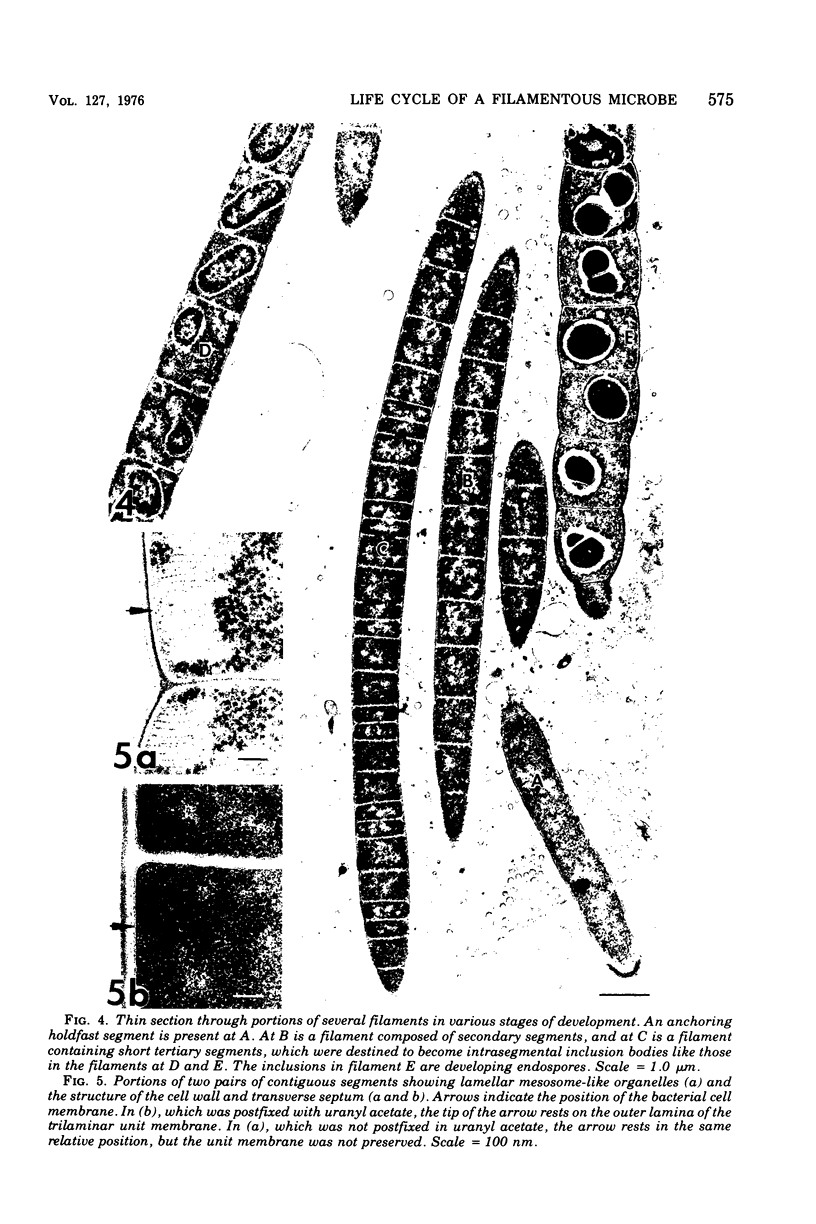
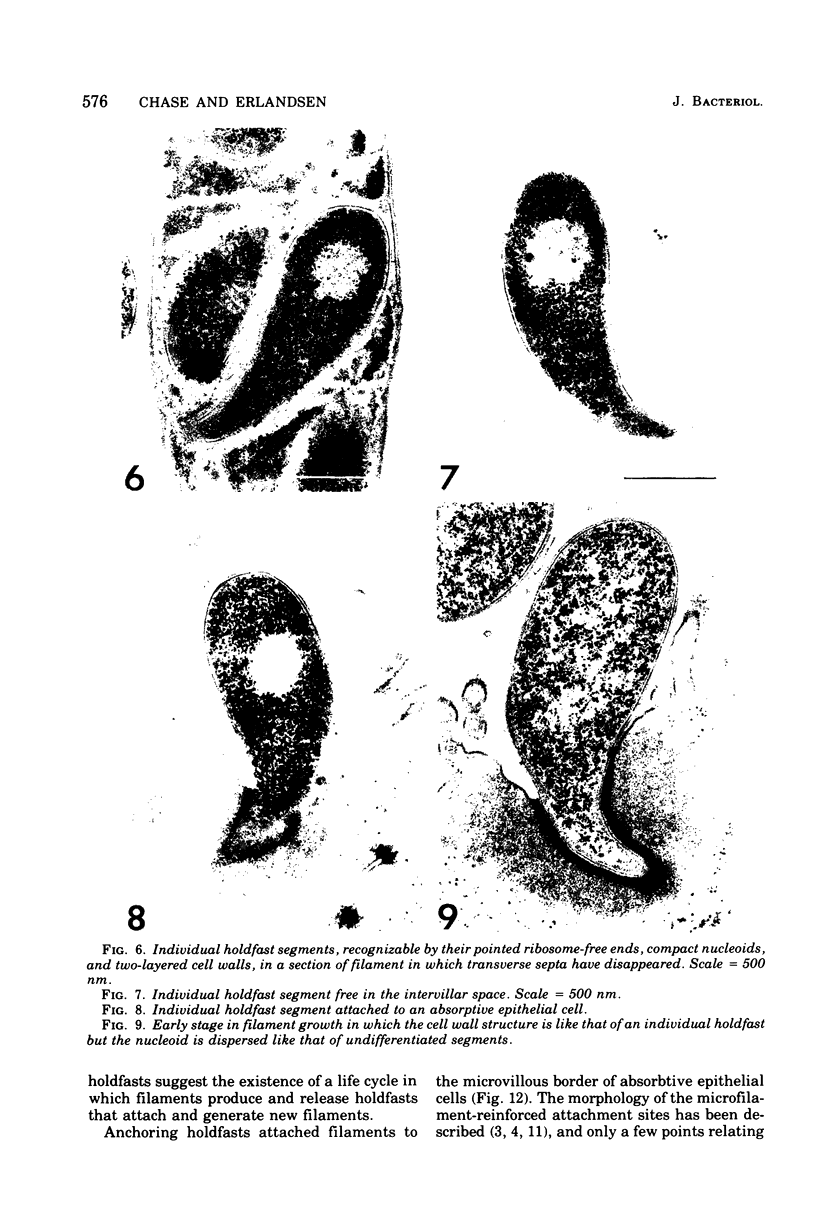
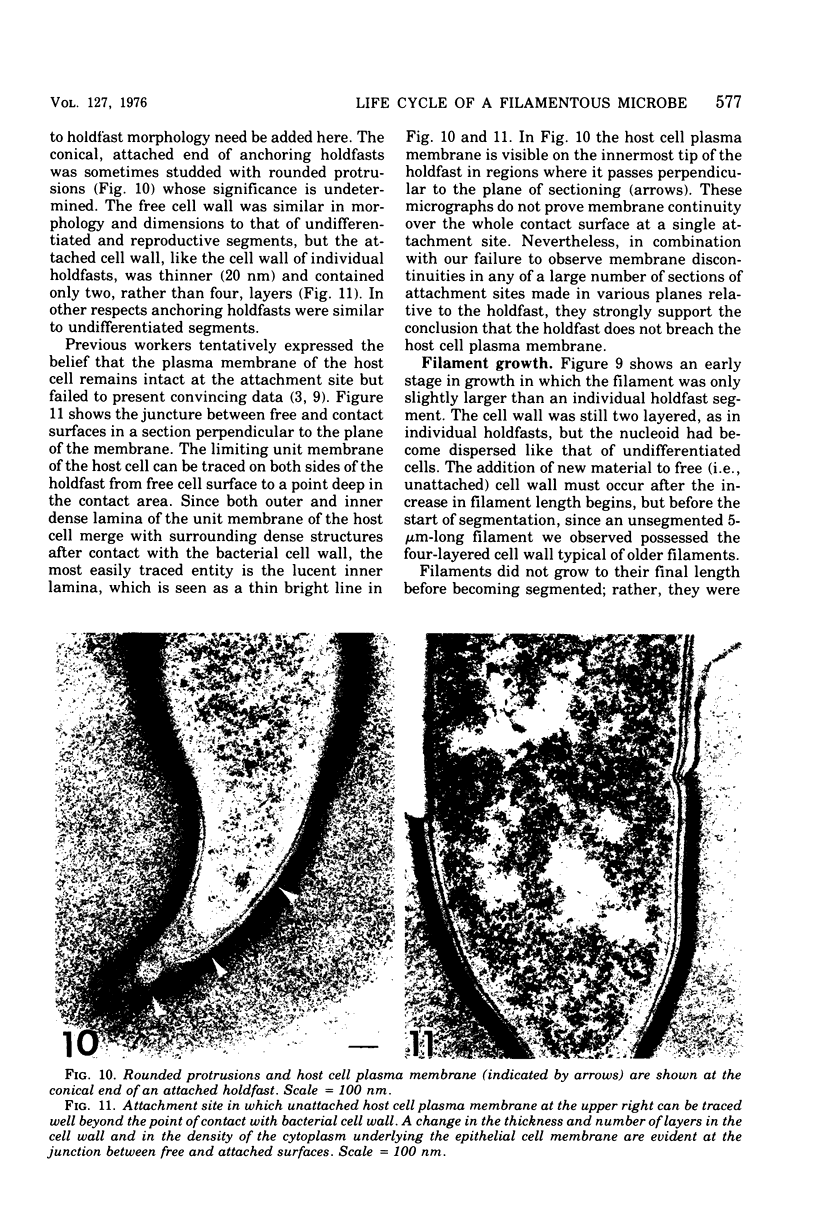
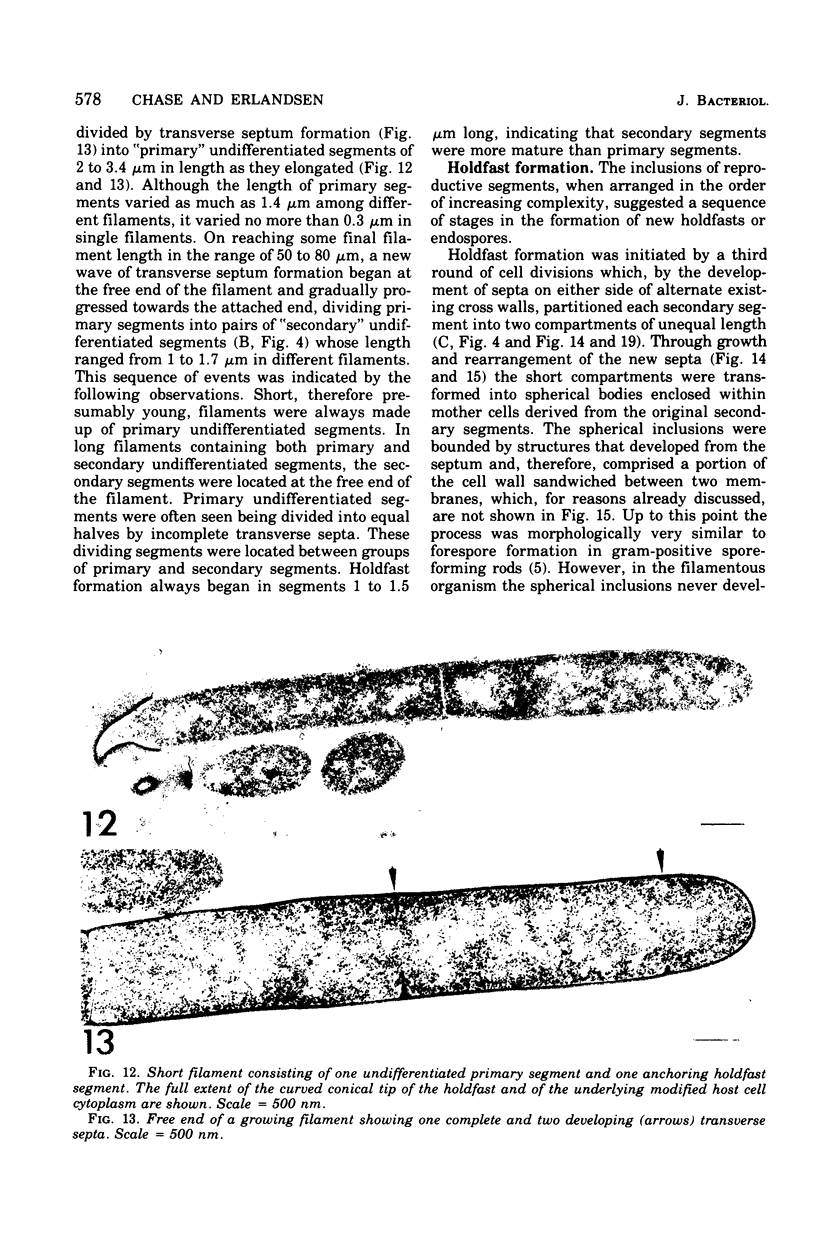
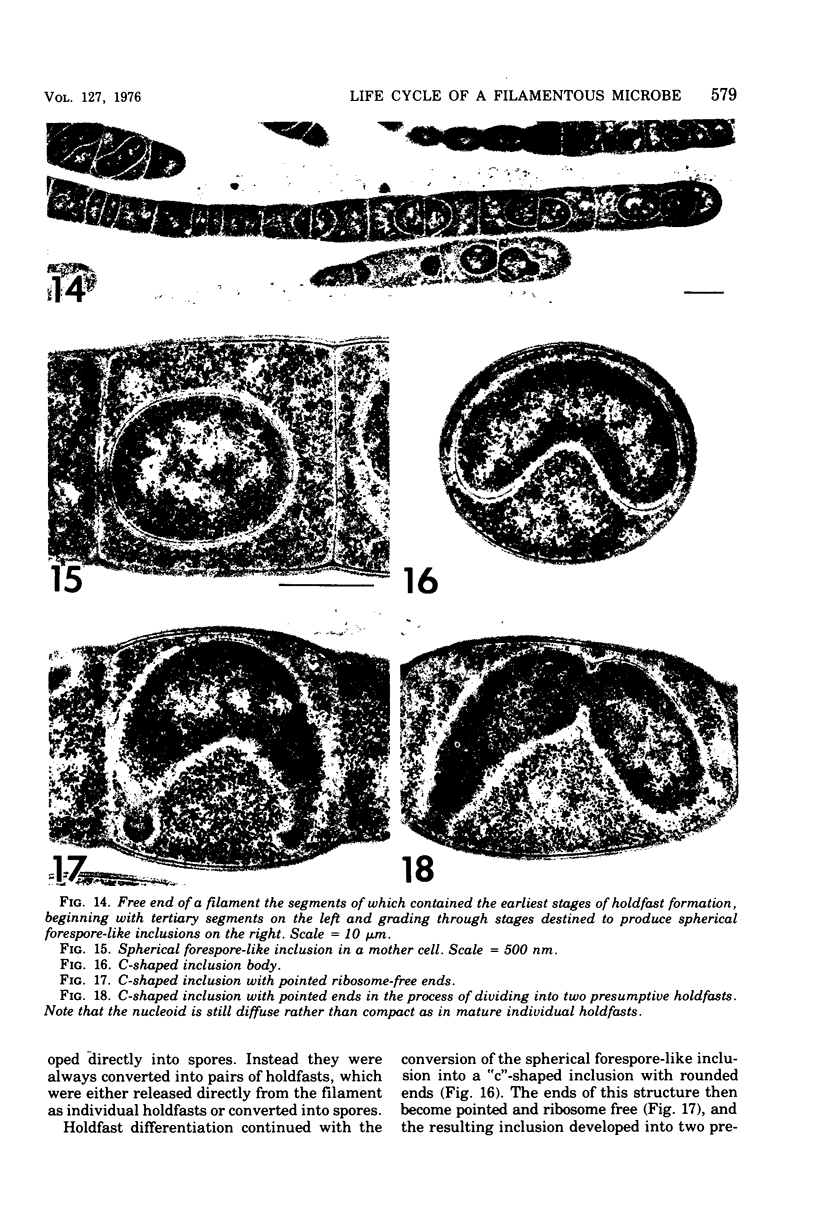
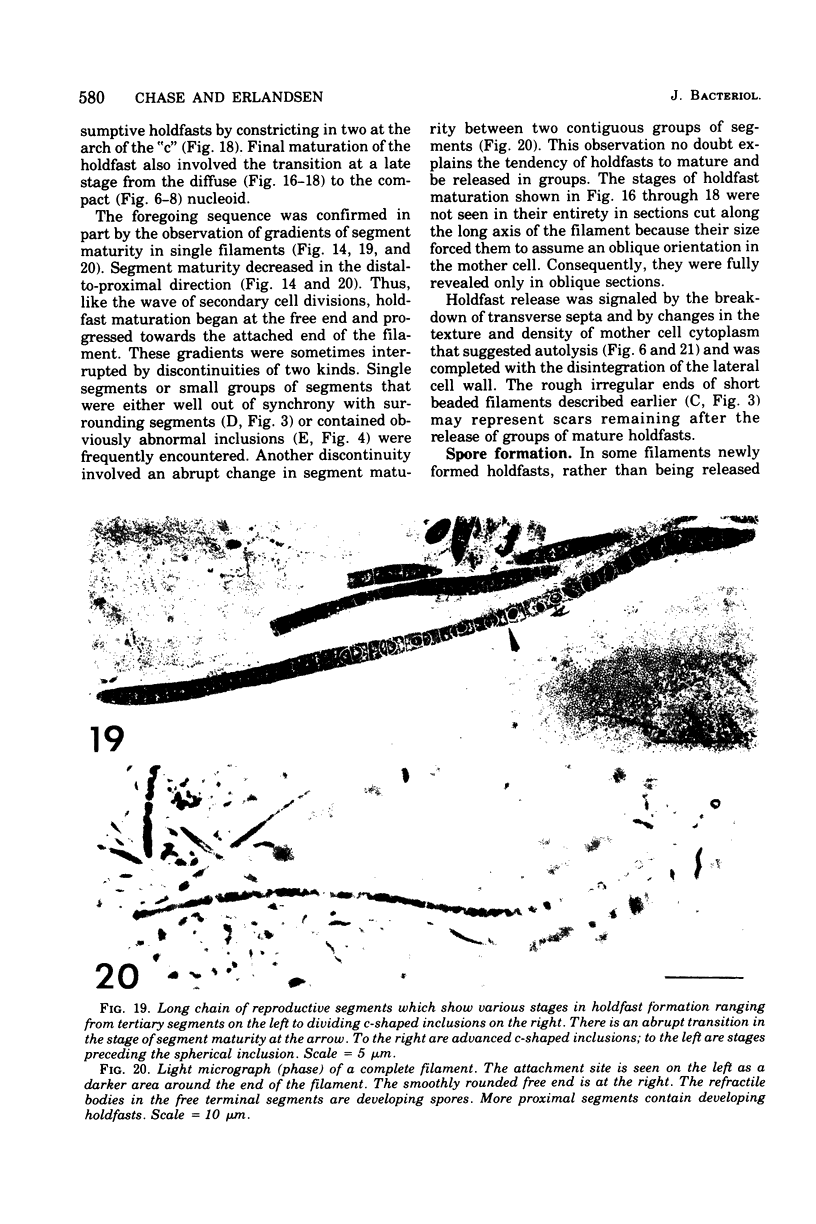
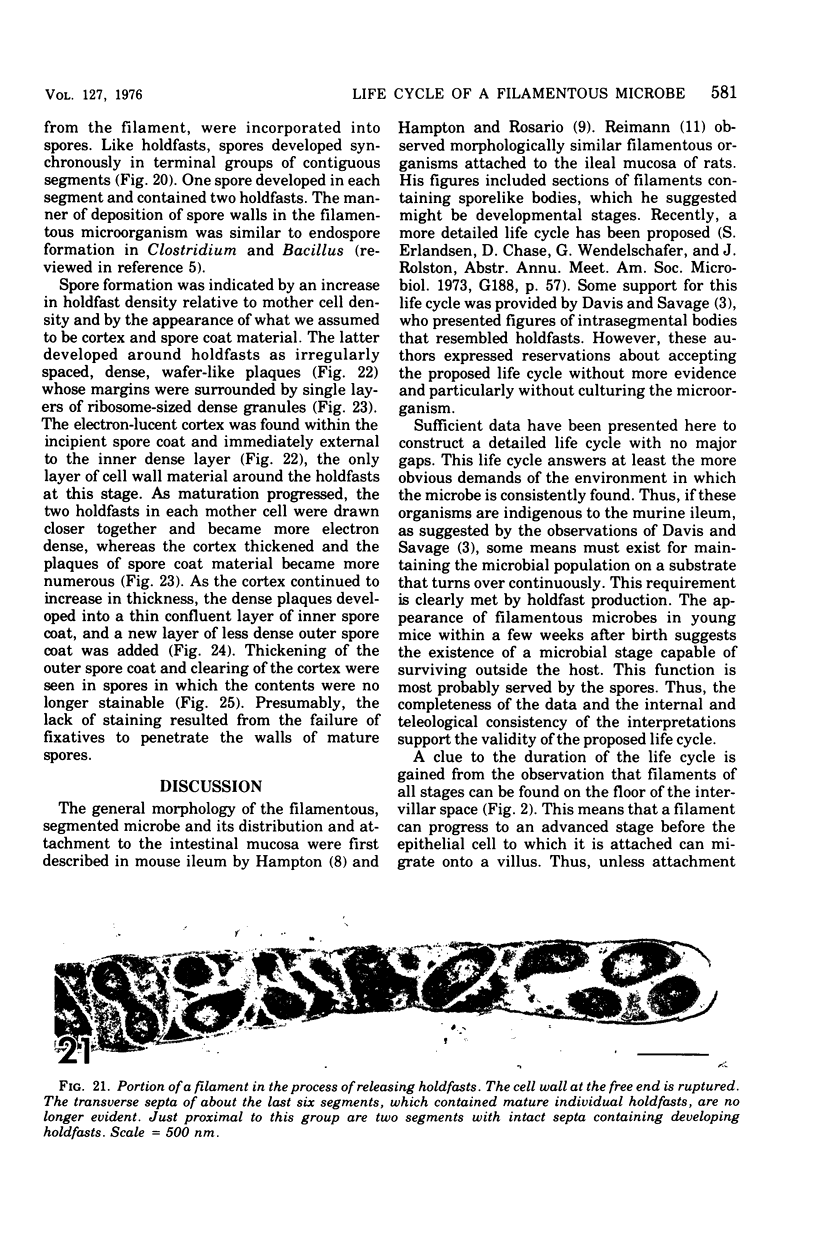


Images in this article
Selected References
These references are in PubMed. This may not be the complete list of references from this article.
- Davis C. P., Savage D. C. Habitat, succession, attachment, and morphology of segmented, filamentous microbes indigenous to the murine gastrointestinal tract. Infect Immun. 1974 Oct;10(4):948–956. doi: 10.1128/iai.10.4.948-956.1974. [DOI] [PMC free article] [PubMed] [Google Scholar]
- Erlandsen S. L., Chase D. G. Morphological alterations in the microvillous border of villous epithelial cells produced by intestinal microorganisms. Am J Clin Nutr. 1974 Nov;27(11):1277–1286. doi: 10.1093/ajcn/27.11.1277. [DOI] [PubMed] [Google Scholar]
- Fuller R., Turvey A. [Bacteria associated with the intestinal wall of the fowl (Gallus domesticus)]. J Appl Bacteriol. 1971 Sep;34(3):617–622. doi: 10.1111/j.1365-2672.1971.tb02325.x. [DOI] [PubMed] [Google Scholar]
- Hampton J. C., Rosario B. The attachment of microorganisms to epithelial cells in the distal ileum of the mouse. Lab Invest. 1965 Aug;14(8):1464–1481. [PubMed] [Google Scholar]
- Lipkin M. Proliferation and differentiation of gastrointestinal cells. Physiol Rev. 1973 Oct;53(4):891–915. doi: 10.1152/physrev.1973.53.4.891. [DOI] [PubMed] [Google Scholar]



